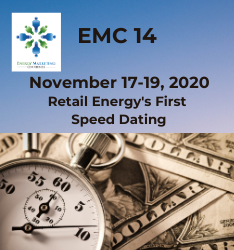|
|
|
|
|
New York PSC Orders Creation of New York City-Specific (Zone J) RPS Tier, Obligation Assigned To ESCOs, LSEs
The following story is brought free of charge to readers by EC Infosystems, the exclusive EDI provider of EnergyChoiceMatters.com
The New York PSC adopted various changes to its clean energy standard (CES), including creation of a new Tier 4, specific to New York City (Zone J), with which ESCOs and other LSEs must comply
Under Tier 4, whose parameters are discussed further below, each LSE will be
obligated to purchase qualifying Tier 4 RECs (less any Tier 4
RECs re-sold in the voluntary market) in proportion to its
overall share of statewide load.
The LSE compliance obligation
will be administered in a manner similar to the ZEC (nuclear credit) program. The LSEs’ contracts with NYSERDA for Tier 4 would be based on
forecasts of load and utilize a balancing reconciliation at the
end of each program year such that each LSE will have purchased
the correct proportion of Tier 4 RECs on an annual basis.
The
Commission further directed NYSERDA to file an implementation
plan for stakeholder comment and ultimate Commission approval
that will include a description of the compliance obligation
calculations, process and structure, as well as a standard
purchase agreement within 12 months of the issuance of the Tier
4 RFP for such RECs.
The PSC declined to set a pre-determined cap on Tier 4 REC prices at this time. Instead, the Commission will require NYSERDA and DPS Staff to file any
agreement for the procurement of Tier 4 RECs with the Commission
for review and approval.
Tier 4 will be open to all “renewable energy systems,” including renewable energy systems paired with storage, subject to the following conditions.
A resource must either be located in Zone J or delivered to Zone J over a new transmission interconnection in order to be compensated under Tier 4.
Under Tier 4, non-hydropower renewables must achieve commercial operation after the date of this Order to be eligible for Tier 4.
The Commission declined to allow behind-the-meter resources to be eligible under Tier 4 (or Tier 1 for that matter).
Hydropower resources will be subject to "additionality" requirements
Specifically, the PSC adopted a Supplier GHG Baseline for hydropower resources, such that Tier 4 RECs would only be compensated so long as the associated energy represents a net increase in the supplier’s total renewable energy generation as compared to a three-year historic baseline.
A separate Supplier Energy Baseline had also been proposed for hydropower resources, which would provide that Tier 4 RECs would only be compensated if and to the extent renewable generation is delivered to the NYCA that exceeds the three-year historical baseline of renewable energy that the supplier and its affiliates have delivered to the NYCA.
Rather than prescribing the use of a Supplier Energy Baseline at this time, the PSC directed NYSERDA to solicit Tier 4 bids both with and without the Supplier Energy Baseline and to evaluate them based on their overall value to the State, with NYSERDA given flexibility in terms of setting the baseline
The PSC held that offshore wind shall be procured separately from Tier 4 resources. The order sets forth separate procurements for 9 GW of offshore wind by 2035.
The Commission ruled that there should be no minimum procurement quantity for Tier 4. In terms of a maximum procurement quantity, the Commission directed NYSERDA to impose a non-binding limit of 1,500 MW on its first Tier 4 Solicitation that it may exceed only upon receipt of proposals that are sufficiently compelling to warrant such a major commitment from the State.
The Commission directed NYSERDA to offer any Tier 4 RECs it obtains for re-sale to the voluntary market. Such re-sales should be subject to a price floor set at NYSERDA’s procurement costs, including administrative costs. Re-sales of Tier 4 RECs should be competitively priced, such that if the demand for Tier 4 RECs outstrips supply, the price may exceed NYSERDA’s procurement costs. If re-sale prices do exceed procurement costs, the excess revenue should be dedicated by NYSERDA to energy efficiency programs in disadvantaged communities in Zone J. While the White Paper proposed the re-sale of Tier 4 RECs through 2029 only, the Commission sees no reason to limit these sales in this manner and authorizes NYSERDA to re-sell Tier 4 RECs without a limit on the timeline for such sales, the PSC said
"When Tier 4 RECs are re-sold, the reduction in Tier 4 RECs held by NYSERDA will reduce each LSE’s compliance obligation commensurately. But no other aspect of the LSE compliance obligation will change," the PSC ruled
The PSC noted that New York City had suggested that when voluntary buyers purchase Tier 4 RECs, those buyers’ LSEs should see a reduction in their compliance obligation. The PSC ruled that, "Local Law 97 is a New York City law and the City has discretion to determine the compliance obligations for that program. But the Commission will not compromise its longstanding CES compliance requirement that all LSEs obtain and retire the appropriate quantity of RECs to substantiate compliance with each tier, including the new Tier 4."
The Commission disagreed with commenters who contended that Tier 4 RECs sold to non-LSE buyers should not count towards the State’s compliance with the 70 by 30 Target.
New Tier 2 Obligation On ESCOs
The PSC also modified the CES Tier 2, adopting a new "Competitive Tier 2" procurement to be undertaken by NYSERDA
Regarding funding of the Competitive Tier 2 Program, the Commission found NYSERDA’s request to fund the Tier 2 Program through a new Tier 2 REC obligation imposed on LSEs to be reasonable, given its consistency with other CES obligations.
Accordingly, NYSERDA and Staff shall annually calculate a uniform per MWh LSE Tier 2 rate to be applied to each LSE’s actual wholesale load to calculate each LSE’s Tier 2 Monthly Obligation Payments, as described previously in the Tier 2 Petition. An LSE’s Tier 2 Monthly Obligation Payment shall be calculated by multiplying the LSE Tier 2 Rate by the number of MWh the LSE served, using the NYISO Version 1 load data, and Load Modifier Rate. Once NYSERDA determines the LSE’s Tier 2 Monthly Obligation Payment and issues an invoice, LSE’s shall submit their payment to NYSERDA within 15 days. NYSERDA shall also implement a reconciliation process at the end of each compliance year in a manner similar to the process approved by the Commission for the zero-emissions credit (ZEC) program and described in the Tier 2 petition.
Within 90 days of the issuance of the order, NYSERDA shall provide each "effected LSE" with the standard Agreement for the Sale of Tier 2 RECs provided in the Tier 2 petition. All LSEs are directed to provide NYSERDA with an executed copy of the standard Agreement for the Sale of Tier 2 RECs as soon as possible, but in no event later than 30 days after receipt of the standard agreement.
In terms of timing, the PSC noted that, regarding Competitive Tier 2 LSE obligations, because the uniform per MWh LSE Tier 2 rate cannot be calculated until after the solicitation process, payments by LSEs to NYSERDA will begin in July 2021. The uniform per MWh LSE Tier 2 rate shall be calculated and published no later than May 1, 2021, to provide LSEs with at least 2 months’ notice before the commencement of payments to NYSERDA. For 2021 only, NYSERDA shall collect the full 2021 calendar year REC costs over the final six months of 2021, beginning in July 2021. Compliance year 2022 and subsequent compliance years will then operate, for both collections and payments, on a standard calendar year basis.
The PSC generally adopted a proposal to allow NYSERDA to re-sell Tier 2 RECs that it purchases from generators, but required a further filing.
NYSERDA shall sell Tier 2 RECs at a price floor equal to its procurement costs, plus the Commission-approved administrative adder. However, more information regarding the process to be undertaken by NYSERDA when re-selling Tier 2 RECs is necessary before such sales can occur, the PSC said The Commission thus directed NYSERDA to file, on or before May 1, 2021, an implementation plan for stakeholder comment and ultimate Commission approval that will include a description of the re-sale process, timing, and its interaction with the LSE obligations and reconciliation process described above. Only after approval of the implementation plan can NYSERDA begin re-selling Tier 2 RECs.
Tier 2 solicitations, which are for existing resources, will be capped at $200 million, with three-year contracts awarded
Other Issues
The PSC generally supported a proposal to allow NYSERDA to sell offshore wind RECs (ORECs) to non-LSE buyers
Notably, the Commission adopts the recommendation that LSEs need not obtain ORECs from NYSERDA and can instead purchase ORECs directly from generators to satisfy their offshore wind obligations.
As with Tier 4, the Commission disagrees that the 70 by 30 Target can only be satisfied through LSE obligations and reiterated that voluntary renewable purchases remains a critical component of the actions to be taken to achieve the 70 by 30 Target. Thus, all RECs and ORECs consumed by New York State load shall count toward the 70 by 30 Target, including voluntary purchases.
The Commission adjusted downward the current LSE Tier 1 obligations to reflect the expected level of available RECs in the short term.
The table below provides the new LSE Tier 1 obligations for the next three years.
The PSC adopted NYSERDA’s proposal to fund its administration of the Tier 1, Tier 2, and ZEC programs through an adder mechanism to REC prices, beginning in 2021
The adder mechanism is notable because discrete LSEs may in the future receive authority to self-supply ZECs, rather than purchasing from NYSERDA. For example, under the ZEC order, no trading or self-supply is allowed, but LSEs may individually petition the PSC for self-supply authority. Ostensibly, self-supply entities would avoid any adder for an attribute procured from NYSERDA
The PSC noted that the current ZEC program as a deficit of approximately $34 million due in part to non-participation by certain NYPA loads
The PSC directed the investor-owned utilities to collaborate with NYSERDA, Staff and other interested parties to develop a backstop mechanism to address the NYPA ZEC deficit, and the utilities shall file tariffs including such a mechanism.
Case 15-E-0302
ADVERTISEMENT Copyright 2010-20 Energy Choice Matters. If you wish to share this story, please
email or post the website link; unauthorized copying, retransmission, or republication
prohibited.
ESCOs/LSEs Also Now Assigned Obligation Under Modified Tier 2
New Adder On LSE Purchases From NYSERDA Adopted As NYSERDA Funding Mechanisms; May Tilt Market For LSEs With Ability To Self-Supply
October 15, 2020
Email This Story
Copyright 2010-20 EnergyChoiceMatters.com
Reporting by Paul Ring • ring@energychoicematters.com

NEW Jobs on RetailEnergyJobs.com:
• NEW! -- Channel Partner Sales Manager -- Retail Supplier
• NEW! -- Sr. Billing Analyst -- Retail Supplier
• NEW! -- Director of Regulatory Affairs -- Retail Supplier -- Houston
• NEW! -- Energy Pricing Analyst -- Houston
• NEW! -- Retail Energy Account Executive -- Houston
• NEW! -- Sr. Sales Executive -- Retail Supplier
|
|
|
|









